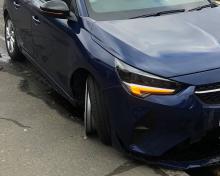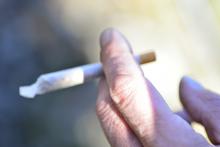Concern is being expressed in the US over the correlation between cannabis use and crashes. Research by the the Insurance
This research has been announced as campaigning is being carried out to decriminalise the recreational use of marijuana across the rest of the US as well as in Canada.
HLDI analysts suggest that the frequency of collision claims/insured vehicle year climbed 6% following the start of retail sales of recreational marijuana in Colorado, Nevada, Oregon and Washington, when compared with Idaho, Montana, Utah and Wyoming. This analysis is based on collision loss data from January 2012 through October 2017.
The HLDI analysts included differences in the rated driver population, insured vehicle fleet, the mix of urban versus rural exposure, unemployment, weather and seasonality in their calculations.
A separate IIHS study meanwhile examined crashes for the 2012–2016 period, before and after retail sales began in Colorado, Oregon and Washington. IIHS estimates that the three states combined saw a 5.2% increase in the rate of crashes/million vehicle registrations, compared with neighbouring states that have not legalised the sale of marijuana for recreational purposes.
The IIHS researchers compared the change in crash rate in Colorado, Oregon and Washington with the change in crash rates in the neighboring states that do not allow recreational use of marijuana.
The IIHS researchers compared Colorado with Nebraska, Wyoming and Utah, and they compared Oregon and Washington with Idaho and Montana. The study controlled for differences in demographics, unemployment and weather in each state.
The two new studies were presented at the Combating Alcohol- and Drug-Impaired Driving summit, hosted by IIHS and HLDI at the Vehicle Research Center.
"The new IIHS-HLDI research on marijuana and crashes indicates that legalising marijuana for all uses is having a negative impact on the safety of our roads," according to IIHS-HLDI president David Harkey. "States exploring legalising marijuana should consider this effect on highway safety."
Driving under the influence of marijuana is illegal in all 50 states and DC, but determining impairment is challenging. Unlike alcohol, the amount of marijuana present in a person's body does not consistently relate to impairment. THC, or Tetrahydrocannabinol, is the primary psychoactive component of cannabis. A positive test for THC and its active metabolite does not mean the driver was impaired at the time of the crash. Habitual users of marijuana may have positive blood tests for THC days or weeks after using the drug.
US road safety concern over cannabis use
Concern is being expressed in the US over the correlation between cannabis use and crashes.






